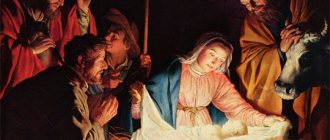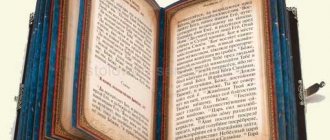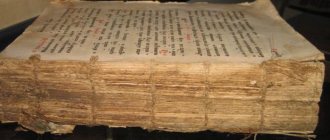Known for his betrayal, Judas Iscariot and Judas Thaddeus are two different personalities
After the insidious offense of Judas Iscariot, they tried not to pronounce this name in the company of believers and saints. For this reason, Saint Jude was called Thaddeus, which means “to praise.” And the name Levvey was similar in idea and meaning to the name Thaddeus.
El Greco's painting "Judas Thaddeus the Apostle", located in the Spanish city of Toledo
On the pages of the Bible, Saint Jude is also called differently. In the Gospel of Luke he appears as Judas Jacob (Luke 6:16) or Judas is not Iscariot (Gospel of John 14), and in the Acts of the Holy Apostles he is called Barsabas (Acts 15:22).
“Judas - not Iscariot - says to Him: Lord! What is it that You want to reveal Yourself to us and not to the world? Jesus answered and said to him, “Whoever loves Me will keep My word; and My Father will love him, and We will come to him and make our abode with him.” (Gospel of John 14),
After the Crucifixion and Resurrection of the Savior, the brother of the Lord visited several countries, including his native Galilee, Judea, Idumea, and Samaria in order to spread the doctrine of the Word of God and the Holy Gospel.
A little later he preached the Christian faith in Syria, Mesopotamia, and Arabia.
Brother of Jesus
All of the above is the most common option for identifying the Apostle Thaddeus, and meanwhile, some researchers identify him with another gospel character - Judas, called the brother of Jesus Christ, since he was the son of Joseph the Betrothed from his first marriage. And this version is also of interest. Before presenting it, we note that this Gospel character is also mentioned under the name Jacob, which should not confuse anyone, since it corresponds to the custom of using several names, which was mentioned above.
This tradition dates back to the Middle Ages, when not only in Western Europe, but also in Rus' it was customary to identify the Apostle Judas (Thaddeus) with the brother of Jesus Christ, who is mentioned in the 6th chapter of the Gospel of Mark. In this regard, he is credited with the authorship of the Epistle of Jude, which is part of the texts of the New Testament.
There is a message in the Bible that is attributed to Judas Thaddeus
When Judas Thaddeus visited Persia with his sermon, it was in this place that he created a conciliar letter in Greek. Conciliar means that it is addressed not to specific individuals, but to all Orthodox communities at once.
A short message, consisting of only one chapter, tells us about the presence of both good and evil Angels, prepares the souls of the Orthodox for the Last Judgment, and lifts the veil of secrecy about the teaching of the Holy Trinity.
In his work, the Apostle tries to guide a person on the true path, namely: he advises in every way to take care of the spiritual beauty of his soul, read prayers daily, show love and attention to others, conscientiously fulfill his obligations, beware of heretics and other devilish teachings.
Statue of St. Jude in Prague, with a plaque on the pedestal "To the Devoted Friend of Christ."
An important point for Judas Thaddeus was that, having a strong faith in the Kingdom of God, it must be supported by good deeds and following the commandments.
Veneration of the Apostle Jude
The Lord's disciple emphasized in his work the danger of becoming an apostate, and the example of his martyrdom became a model for the confession and preservation of Orthodoxy for every Orthodox Christian. The saint is commemorated on July 2 and July 13 according to the new style. Icons of the Lord’s disciple can be found in many churches.
Catholics also revere the disciple of God, because he stands at the origins of Christianity. Orthodox and Catholics share common saints who were glorified by the Church before the Great Schism occurred and Rome fell into heresy in 1054. But Catholic veneration is distorted and unacceptable to the Orthodox.
People come to the saint in prayer, asking for intercession before the Lord, and also hoping for protection in case of hopeless cases and the need to strengthen the desperate. Sincerely believing people do not remain without God's help. The main thing is that the person asking has a humble heart and forgives offenses, as God wants us to do. Troparia, kontakia and canon were compiled for the disciple of God. Saint Demetrius of Rostov compiled two works telling about this disciple of Christ. The first is dedicated to him, the second to the Cathedral of the Apostles.
The saint is asked for intercession before the Lord
The earthly path of the apostle ended in Ararat, to which the saint walked long and persistently
Through backbreaking labor he reached the Armenian city of Ararat; on his difficult path, Saint Jude turned a large number of pagan people away from the sinful worship of various idols. Thanks to their efforts, these people, who had almost taken the destructive path, became pious, believers in God.
Everything was fine until the local pagan clergy found out about St. Jude. And then they conceived a terrible crime: to catch and kill him. As a result, the apostle was captured by the executioners. They tortured the apostle for a long time, and after terrible torment he was crucified on the cross, and his body was pierced with sharpened arrows.
The terrible execution of St. Jude took place in Ararat in the 70s
Perhaps the remains of the apostle are located in the mountains in northwestern Iran
In Iran, near the city of Maki, there is an inactive monastery of St. Thaddeus. According to tradition, once a year a service takes place in the main church of the monastery, which is always attended by a huge number of Armenian wanderers from Iran.
According to legend, one of the very first shrines at the tomb of the apostle was built in this place in 68 AD. e.
Iconography
The description of Judas Thaddeus differs in Greek and Russian iconographic originals. According to Greek tradition, the saint was supposed to be depicted young and beardless. In Russian icon painting manuals of the 18th century, the description of the apostle’s appearance mentions a graying beard, a dark red robe, a blue undershirt, and an omophorion. Judas held the scroll with both hands or only with his right hand, and with his left - the book.
On ancient paintings and reliefs the saint was depicted among the twelve apostles, but without any special signs. He is dressed in a white tunic and cloak or dressed in Greek style in a tunic and himation, like the other apostles.
On monastery frescoes depicting scenes from the New Testament, Judas Thaddeus is marked with initials. The most famous images of the apostle:
- on a triptych based on the apocrypha about the gift of a canvas with an imprint of the face of Christ to King Abgar and in the apostolic deesis from the Sinai monastery of St. Catherine;
- on a painting in the monastery in Matejce (Macedonia) together with James the Righteous and Simeon;
- scene of death on the fresco of the Acts of the Apostles in the Italian church of Santa Maria di Anglona.
On some church paintings, painters depicted the saint crucified or hanging from a tree.
Images of Judas Thaddeus are found on the pages of Greek menias and manuscripts next to the date of the apostle's memory. In the drawings, he holds a scroll in his left hand and blesses with his right. In Russian menaion books, the apostle was depicted as dark-haired, with a short beard, dressed in a green chiton and red cloak, with an omophorion.
The relics of St. Jude are located in the Church of St. Peter in the Vatican, in the chapel of Joseph the Betrothed
Other parts of the relics are located in Reims, Toulouse and Cologne. The relics of Judas Levvey, who is currently revered in Armenia as one of the 12 disciples of Christ, are also located in the Etchmiadzin Monastery, which is the main monastery of the Armenian Apostolic Church.
In 1929, the monastic association of the Roman Catholic Church transferred parts of the relics, namely the forearms, from Armenia to Chicago, which was the beginning of the renewed veneration of the holy apostle as a helper at turning points. St. Jude is also the patron saint of desperate or hopeless causes.
The veneration of particles of the apostle’s relics, which are kept in the Church of St. George in the city of Lvov, currently helps to promote his cult among Catholics and Uniates of Ukraine.
At the end of 2010, this shrine was delivered for veneration to the Odessa Cathedral of the Apostle Andrew the First-Called of the Ukrainian Greek Catholic Church, and in 2011 - to Kirovograd.
A particle of the relics of the Apostle Thaddeus is also listed among the shrines of the sacristy of the St. Elias Monastery in Odessa (Ukrainian Orthodox Church, Moscow Patriarchate), which was the metochion of the Athos Elijah the Prophet monastery.
Daily reading of the Nine Day and the presence of the icon of the apostle will help to cope with difficulties
Two calendar dates
According to the tradition established in the Russian Orthodox Church, the memory of the Holy Apostle Thaddeus is usually celebrated twice a year. The first time this happens is on July 2, when, according to the Church calendar, the brother of the Lord, the Apostle Judas Jacob, is honored. From the above text it is clear that he is identified with the Apostle Thaddeus, whose greatness is given as one of the closest disciples and followers of Jesus Christ. He is celebrated again on July 13 on a holiday called the Council of the 12 Apostles, since he is one of them.
Prayer for every day, helping in difficult situations and giving strength to survive adversity
O Saint Jude - Thaddeus, who was worthy to belong to the family of the Savior, the Blessed Virgin Mary and Saint Joseph, I resort to You through the Sacred Heart of Jesus, I want to bring glory to God for the caresses bestowed upon You. Falling on my knees, I humbly ask You through the Sacred Heart of Jesus, look upon me mercifully, do not despise my humble request, so that trust may not be shaken. God has given you kindness that you come to people with help in hopeless circumstances. Oh, come to me with help, so that I can magnify the mercy of God forever and ever. Amen.
By leaving a comment, you accept the user agreement
Finding Faith
The brothers opposed his decision, and only Judas (Thaddeus), supporting his father, agreed to joint ownership with Jesus of the plot of land allocated to him. This was the reason for calling him the Brother of the Lord. Since, as indicated above, he is often mentioned under the name of Jacob, the expression ─ Jacob, brother of the Lord came into use. It should be kept in mind that these are the same person.
At a later stage of the Savior’s earthly ministry, Judas (Thaddeus) believed that Jesus was precisely the Messiah whom the entire Jewish people had been waiting for for many centuries. Turning with all his heart to his Teacher, he was included by him among the 12 apostles. Nevertheless, remembering his previous unbelief, and rightly considering it a grave sin, the apostle considered himself unworthy to bear the title of God's brother. This was reflected in his conciliar message, where he calls himself only the brother of Jacob.










